 Buried under thick ice and frigid water, volcanic explosions are shaking the Arctic Ocean floor at depths previously thought impossible, according to a new study.Using robot-operated submarines, researchers have found deposits of glassy rock—evidence of eruptions—scattered over more than 5 square miles (15 square kilometers) of the seabed.Explosive volcanic eruptions were not thought to be possible at depths below the critical pressure for steam formation, or 2 miles (3,000 meters). The deposits, however, were found at seafloor depths greater than 2.5 miles (4 kilometers)."This kind of implosive seismicity is rare anywhere on Earth," said study author Robert Sohn, a geophysicist at the Massachusetts-based Woods Hole Oceanographic Institution.The study appears today in the Journal Nature.
Buried under thick ice and frigid water, volcanic explosions are shaking the Arctic Ocean floor at depths previously thought impossible, according to a new study.Using robot-operated submarines, researchers have found deposits of glassy rock—evidence of eruptions—scattered over more than 5 square miles (15 square kilometers) of the seabed.Explosive volcanic eruptions were not thought to be possible at depths below the critical pressure for steam formation, or 2 miles (3,000 meters). The deposits, however, were found at seafloor depths greater than 2.5 miles (4 kilometers)."This kind of implosive seismicity is rare anywhere on Earth," said study author Robert Sohn, a geophysicist at the Massachusetts-based Woods Hole Oceanographic Institution.The study appears today in the Journal Nature.Anatomy of a Mid-Ocean Ridge
Seismic activity was previously detected in the same region in 1999, along the Gakkel Ridge—a 1,200-mile-long (2,000-kilometer-long) mid-ocean mountain range north of Greenland. Hundreds of earthquakes were observed over a nine-month period, with magnitudes between 4 and 6.This earthquake swarm was the largest in recorded history along a spreading mid-ocean ridge and prompted researchers to return to the area for further investigation.In 2007 Sohn and his team stumbled across the glassy pyroclastic rock deposits while searching for hydrothermal vent fields in the Gakkel Ridge.Powerful eruptions sent a plume of carbon dioxide, helium, and liquid lava up into the Arctic waters. When the material cooled, rock debris fell to the ocean floor, he explained.Mid-ocean ridges are formed as hot molten material from inside Earth seeps into and fills the opening between two spreading tectonic plates. The Gakkel Ridge is considered an ultraslow spreading ridge because its plates spread at a rate of 0.4 inch (1 centimeter) a year.
Ultraslow spreading ridge volcanic activity is infrequent, but the new findings of widespread rock debris suggest it could be exceptionally violent when it occurs, Sohn said.Such violence could be the result of a build-up of carbon dioxide underneath the ocean floor.If there was a bubble of carbon dioxide under the surface, the pressure would have built and eventually shattered through an earthquake-weakened crust, resulting in a volcanic eruption, Sohn explained.Sohn's team suggests that the amount of carbon dioxide would need to be at least ten times more than any other documented in seafloor samples in order to produce debris scattered over such a large area.
Building a Body of Evidence
David Clague is a geologist at the Monterey Bay Aquarium Research Institute in Moss Landing, California."Pyroclastic eruptions have been documented along mid-ocean ridges [particularly in the Pacific], but this is the deepest site where they have been found, and also one of the larger deposits," he said.The findings show the eruptions were from bubble-burst activity but not that they were highly explosive, said Clague, who was not involved in Sohn's study."The dispersal of the particles does not necessarily indicate that the eruptions were highly energetic, only that the eruption heated the surrounding seawater and the rising plume of heated water carried the lava fragments upwards where currents could disperse them," Clague said."The important thing is that they have extended previous findings of widespread pyroclastic eruptions on mid-ocean ridges to greater depth and much slower spreading ridges."
Building a Body of Evidence
David Clague is a geologist at the Monterey Bay Aquarium Research Institute in Moss Landing, California."Pyroclastic eruptions have been documented along mid-ocean ridges [particularly in the Pacific], but this is the deepest site where they have been found, and also one of the larger deposits," he said.The findings show the eruptions were from bubble-burst activity but not that they were highly explosive, said Clague, who was not involved in Sohn's study."The dispersal of the particles does not necessarily indicate that the eruptions were highly energetic, only that the eruption heated the surrounding seawater and the rising plume of heated water carried the lava fragments upwards where currents could disperse them," Clague said."The important thing is that they have extended previous findings of widespread pyroclastic eruptions on mid-ocean ridges to greater depth and much slower spreading ridges."
As in the days of Noah....

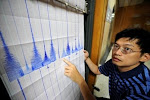
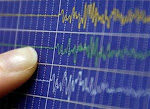
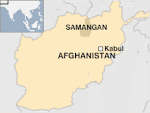







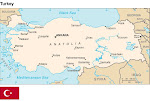
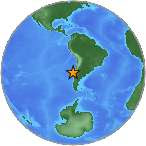




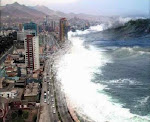

.jpg)


.bmp)
No comments:
Post a Comment